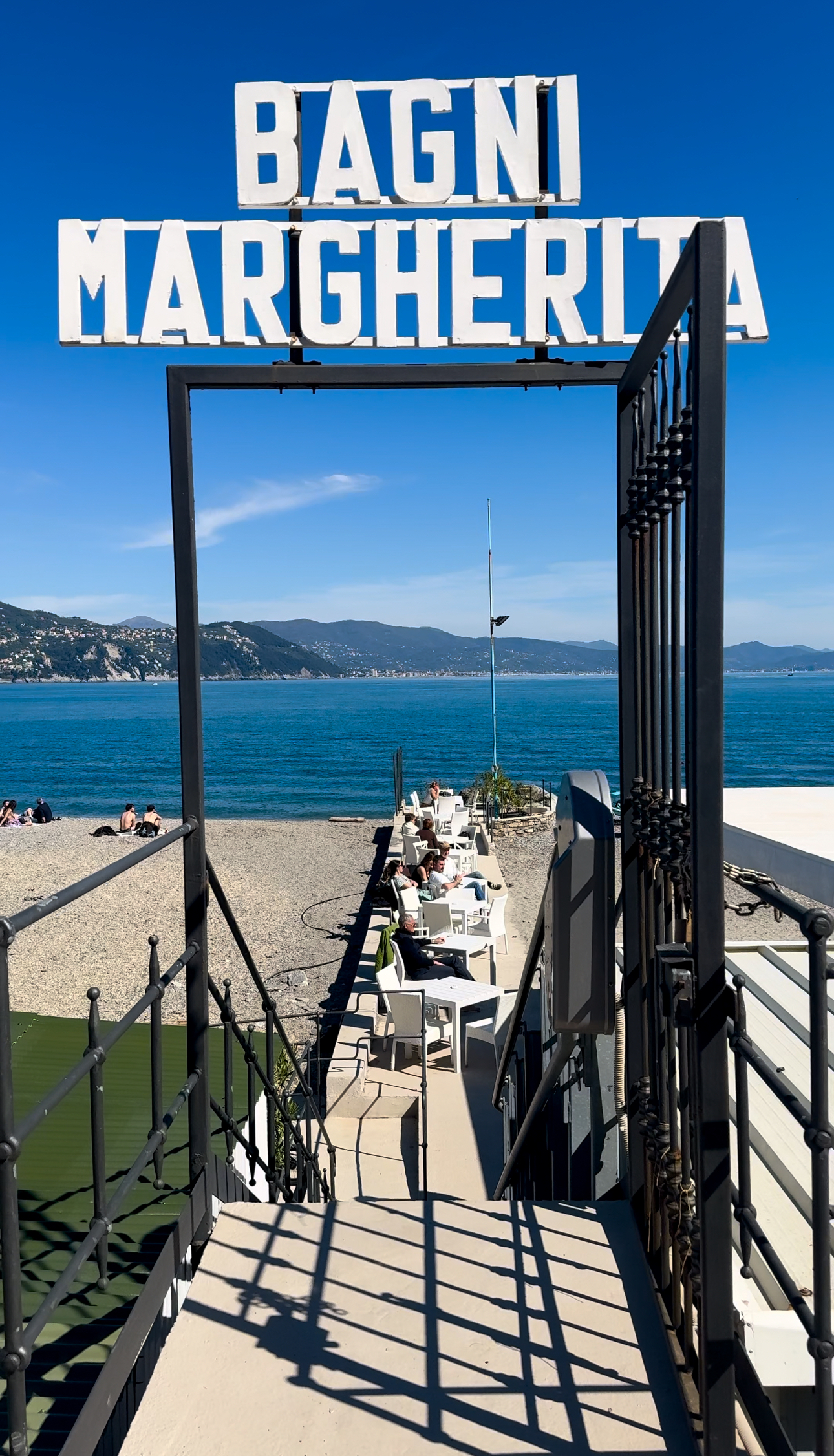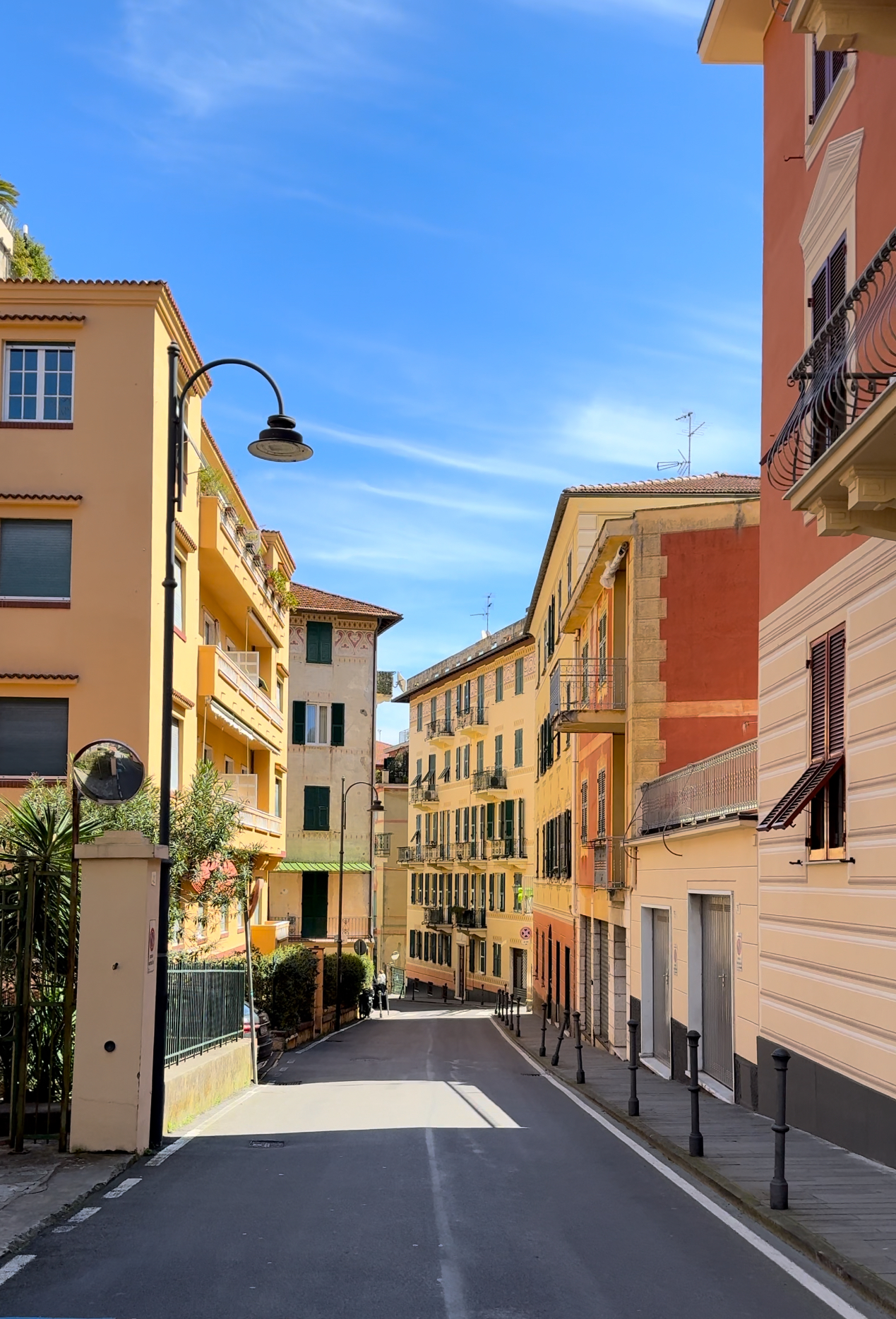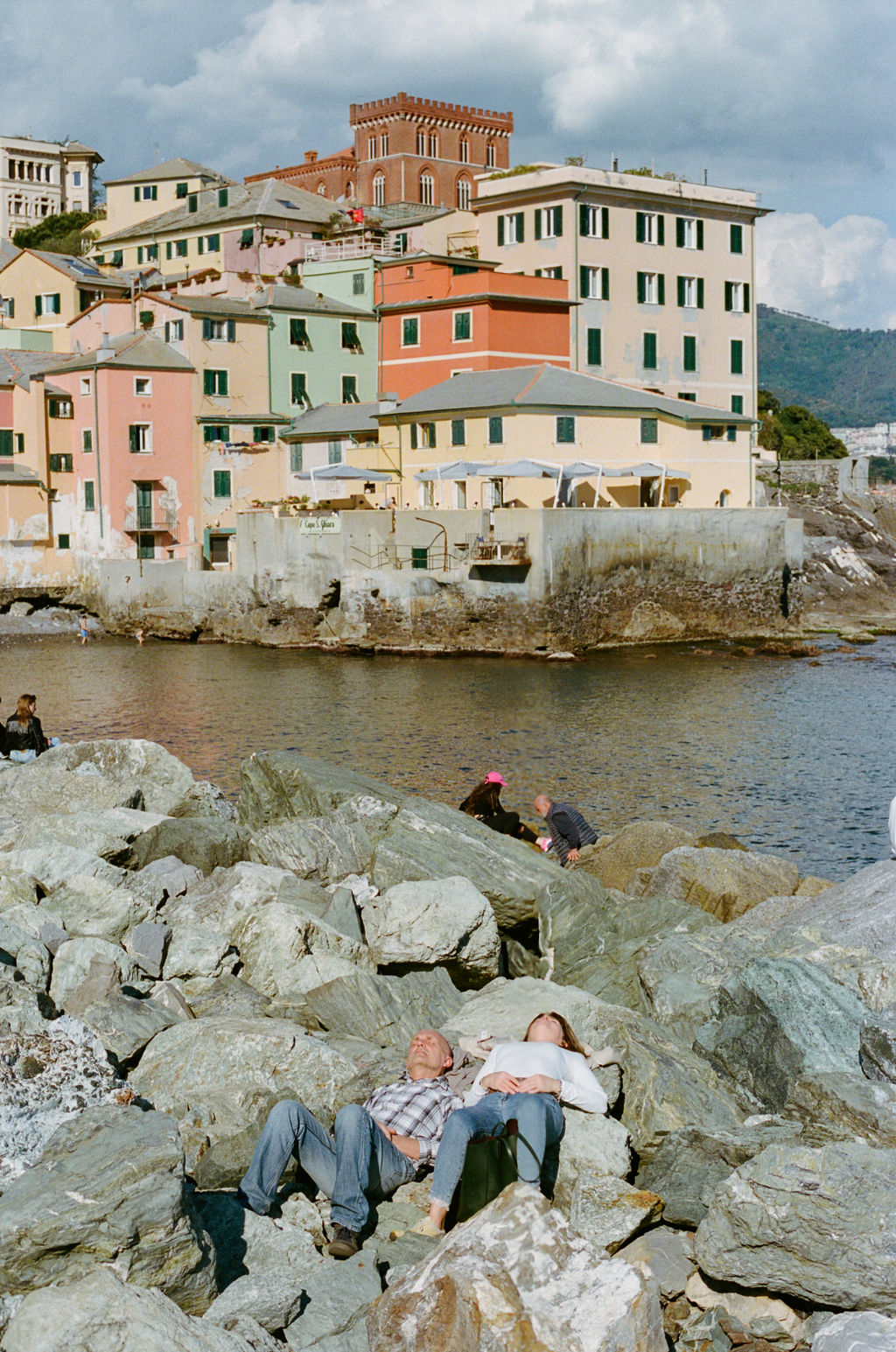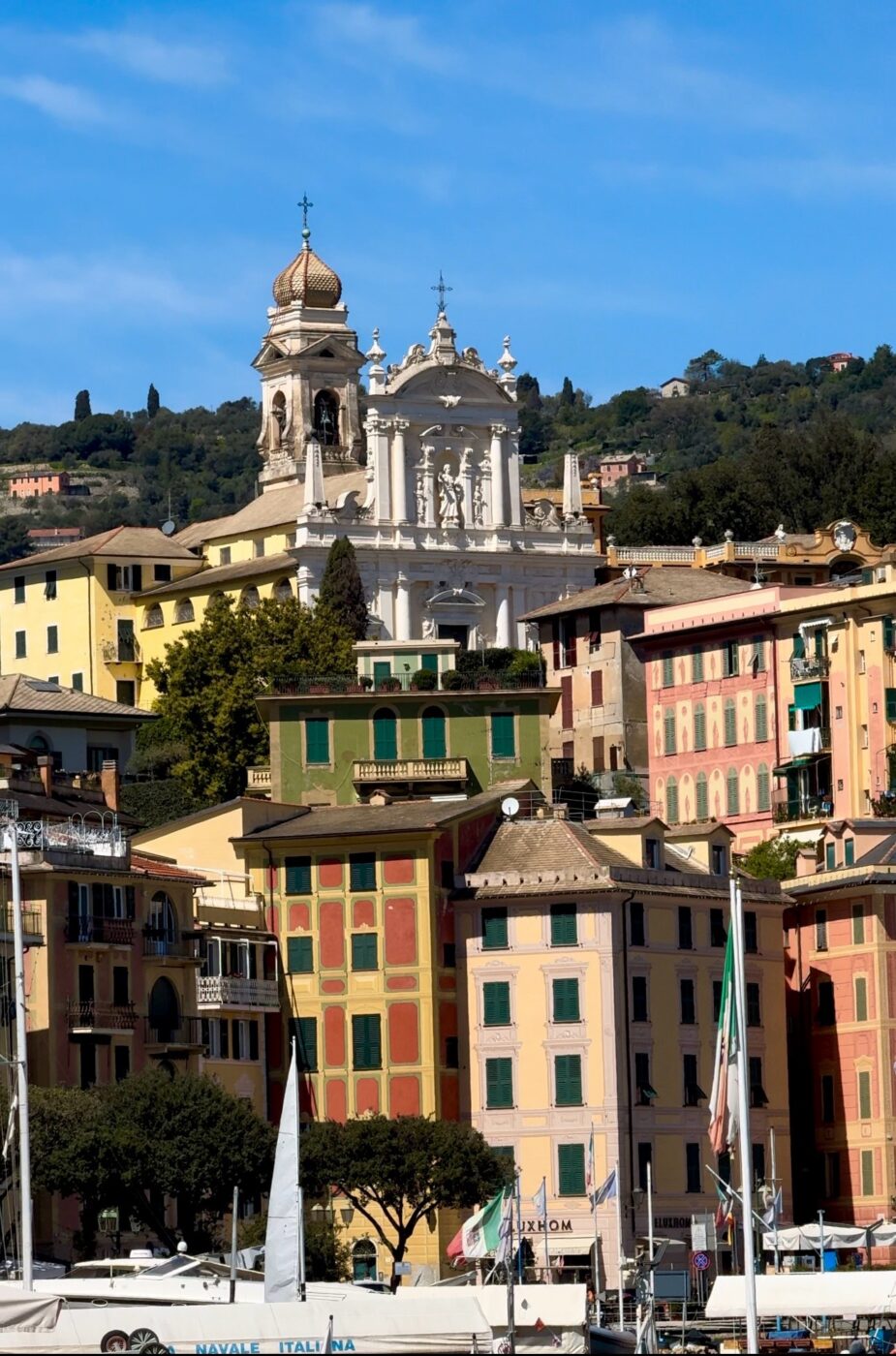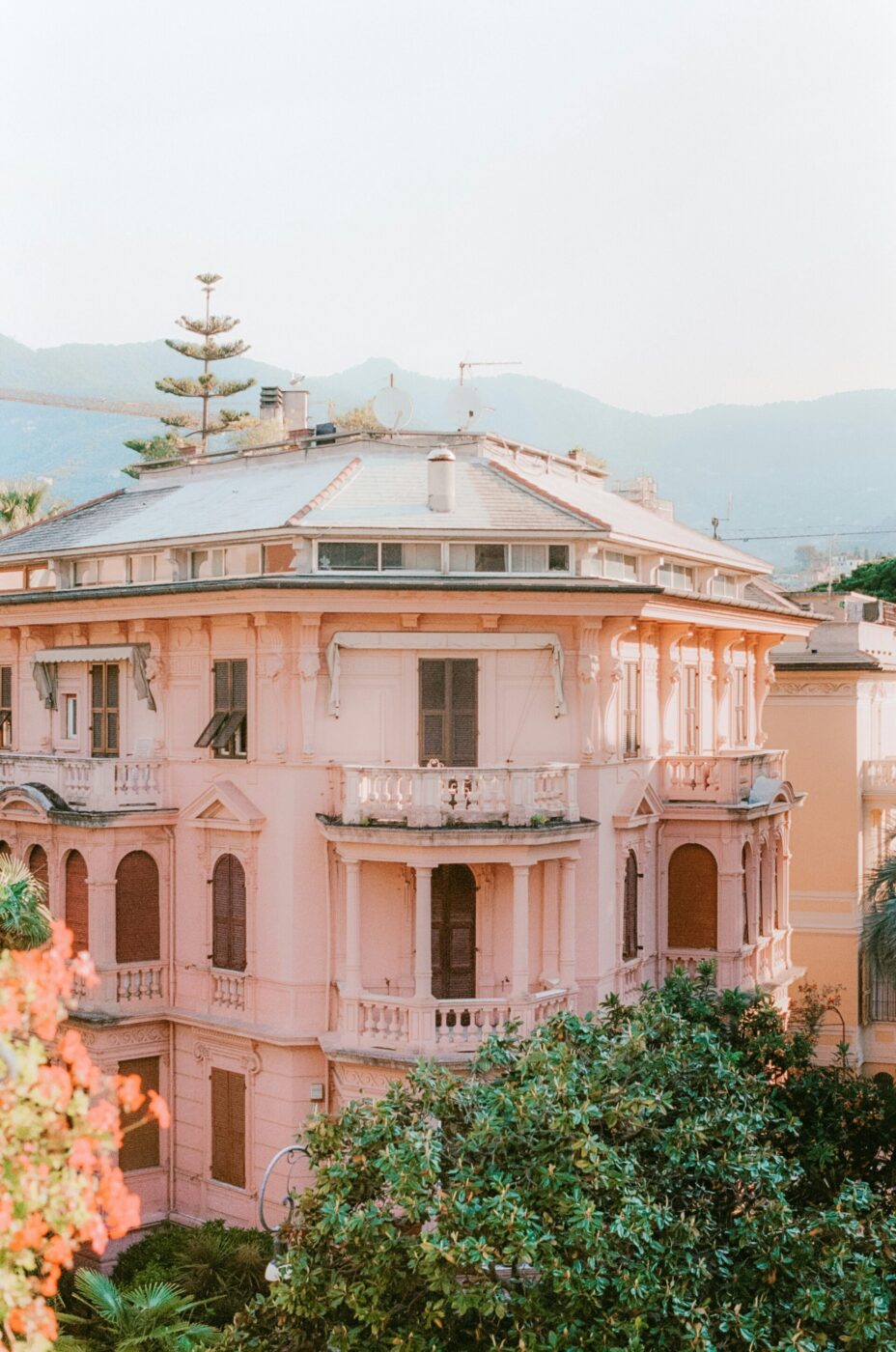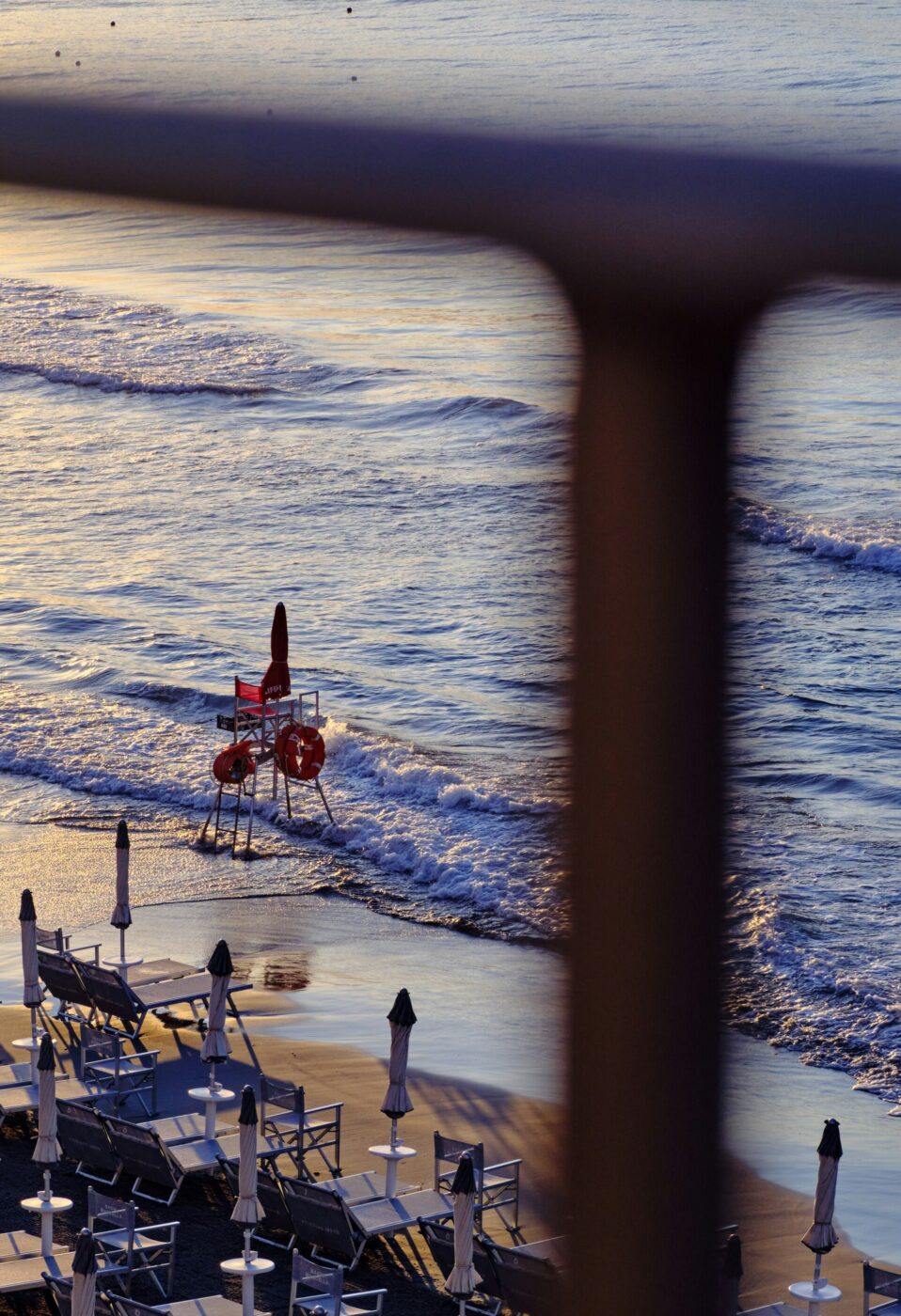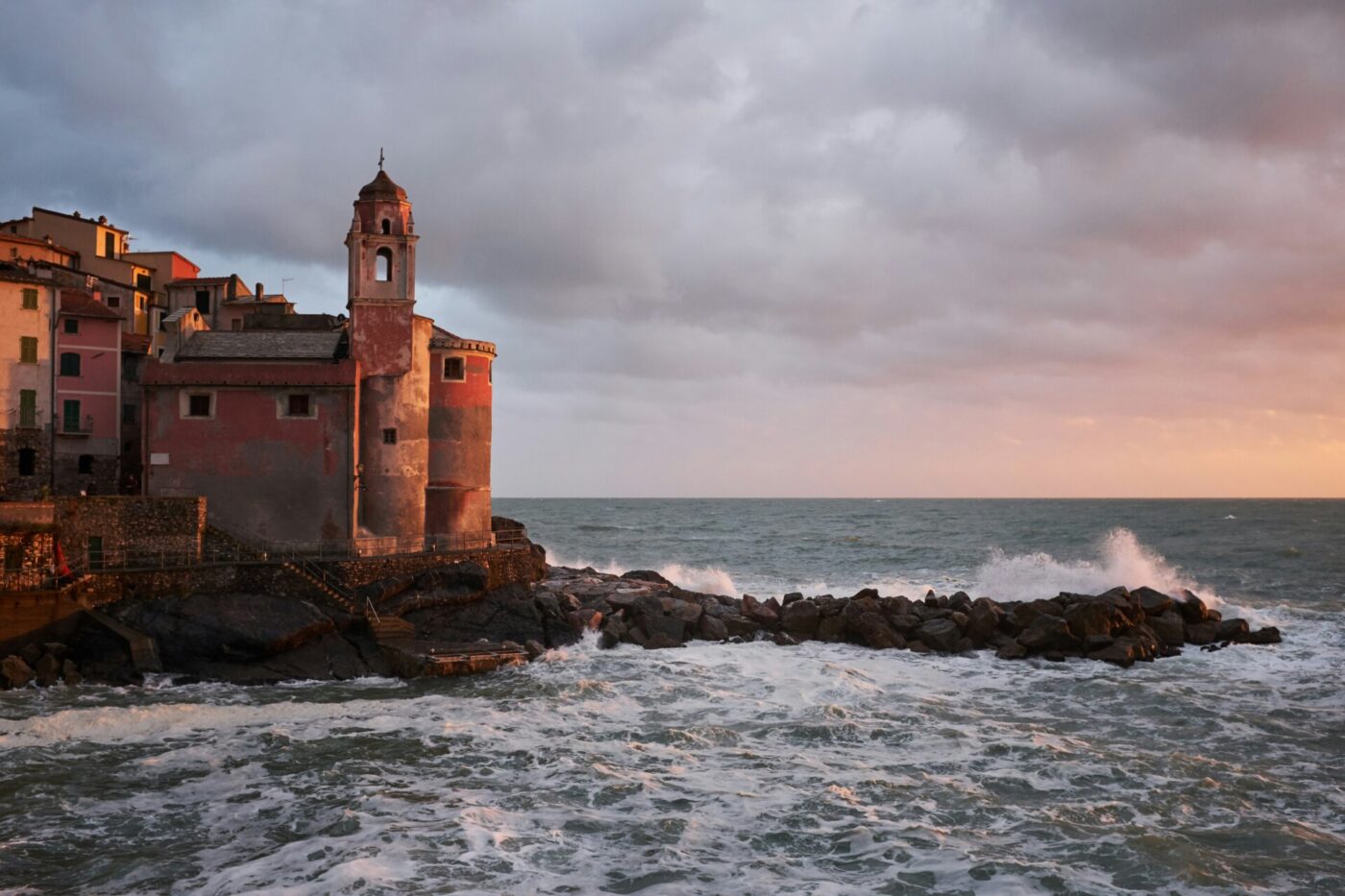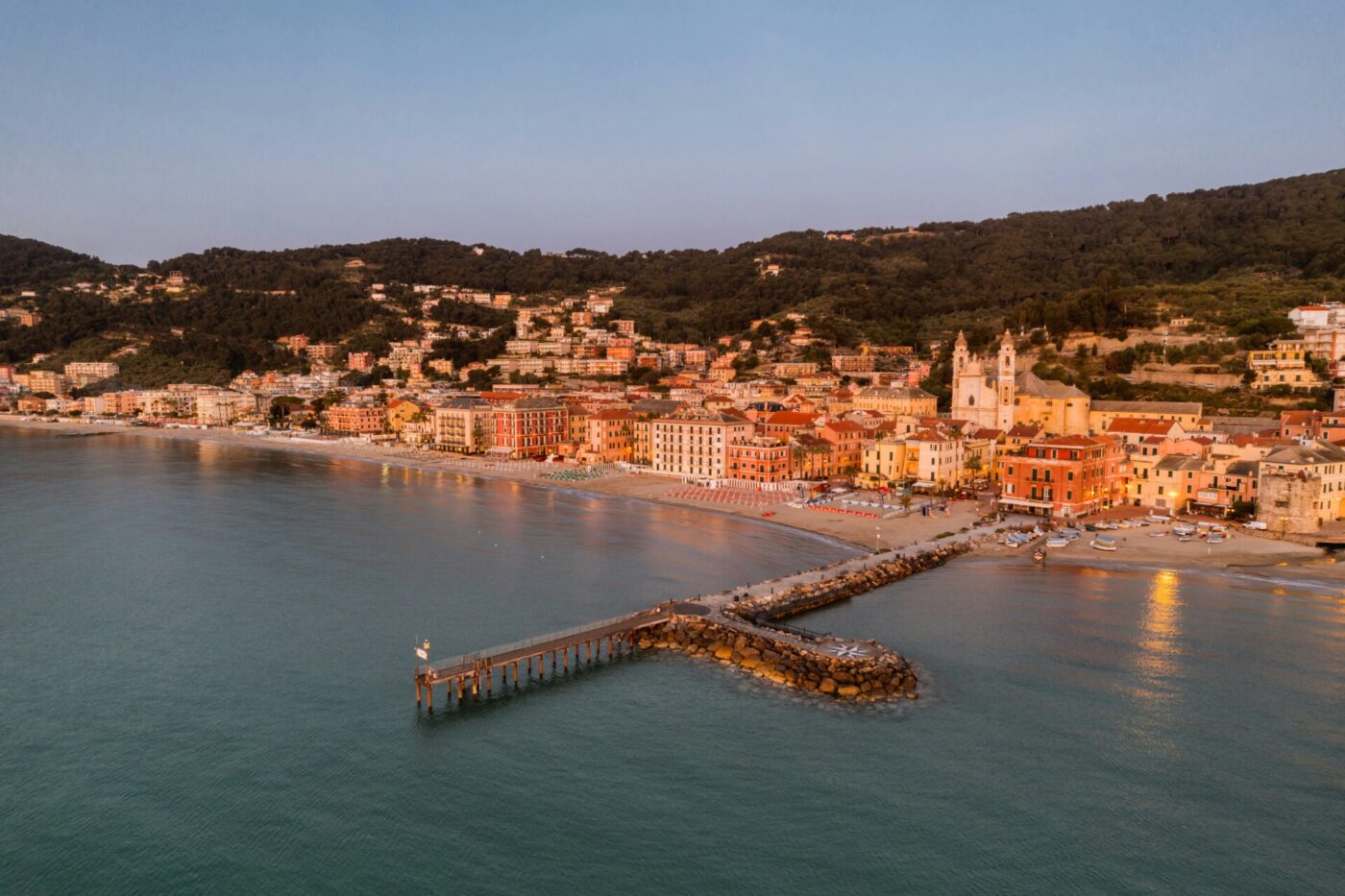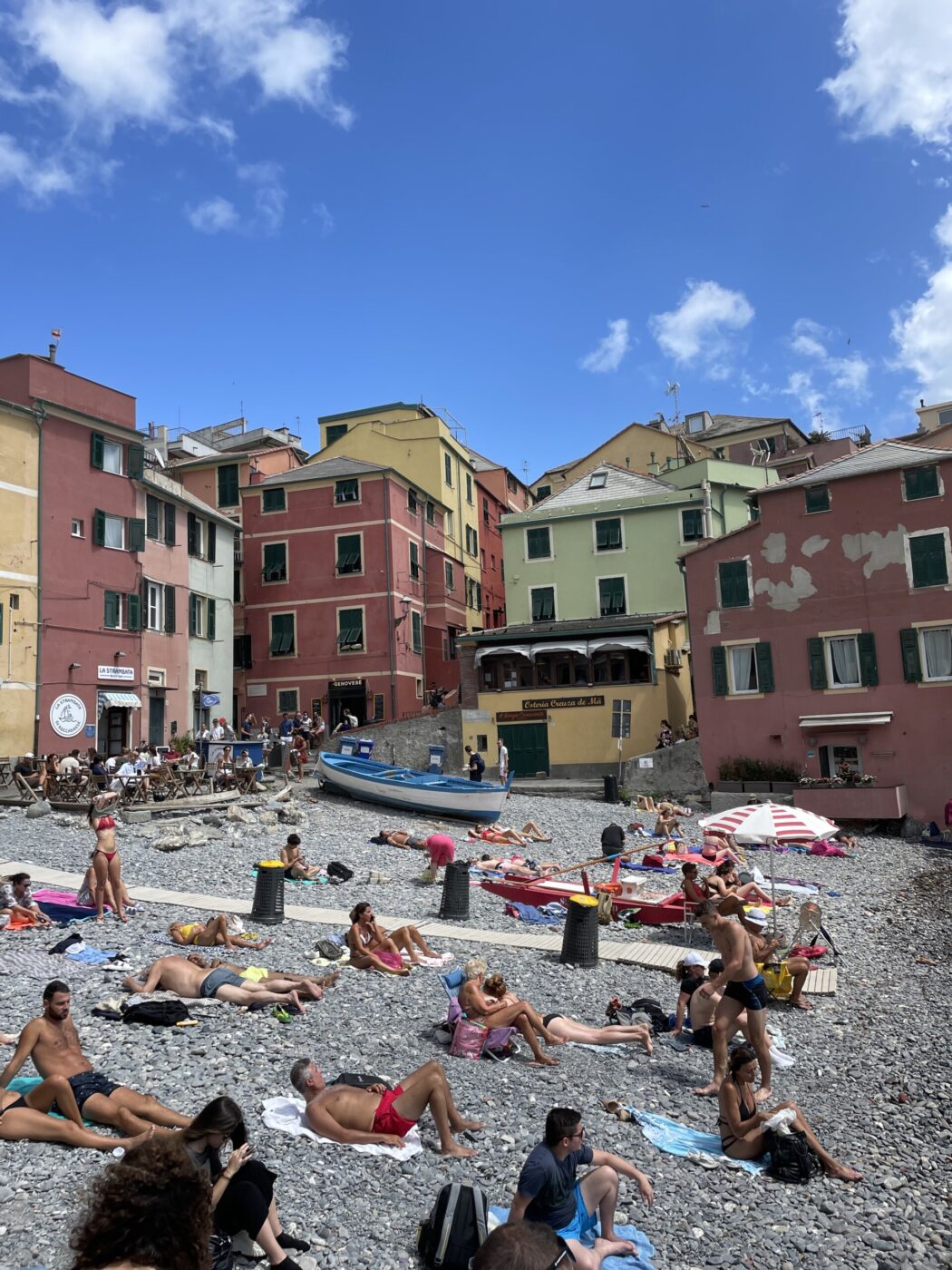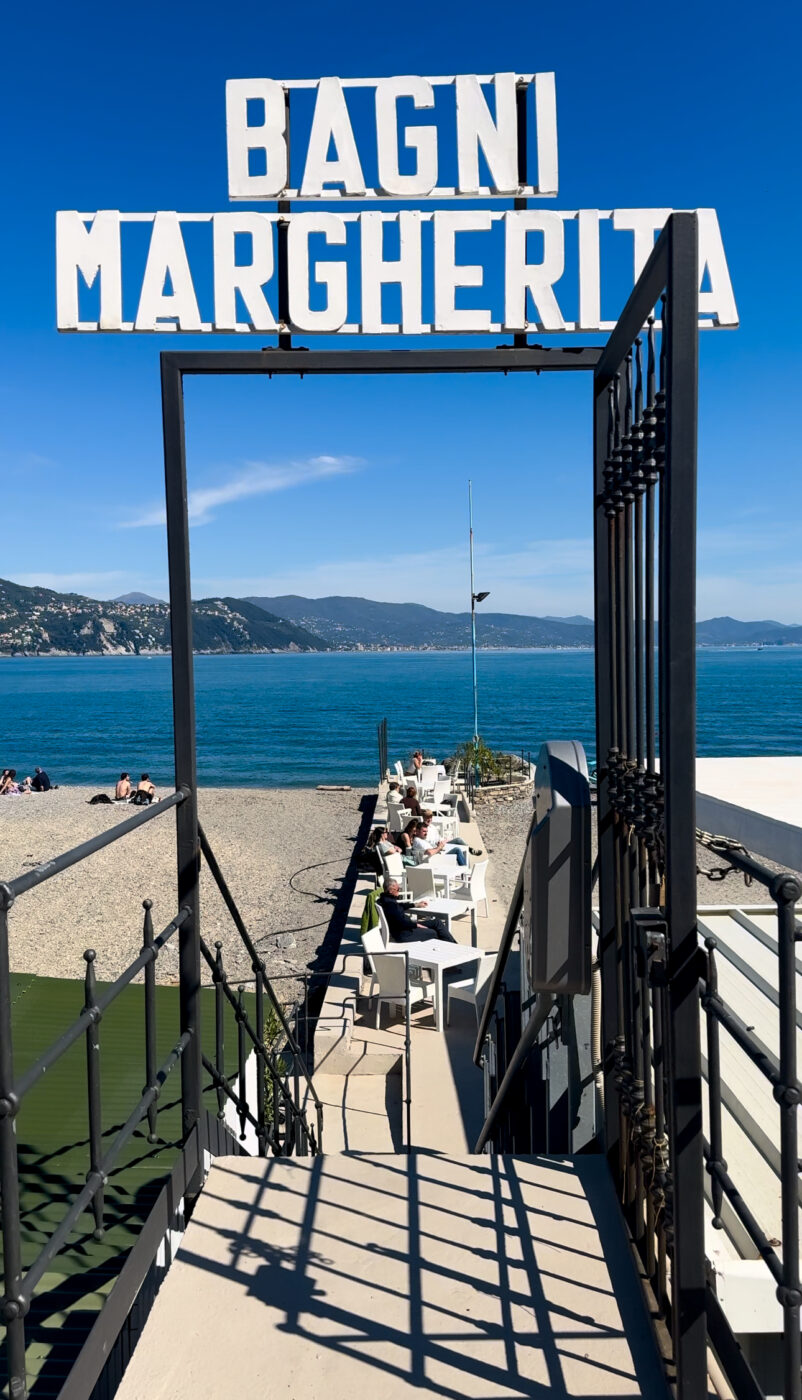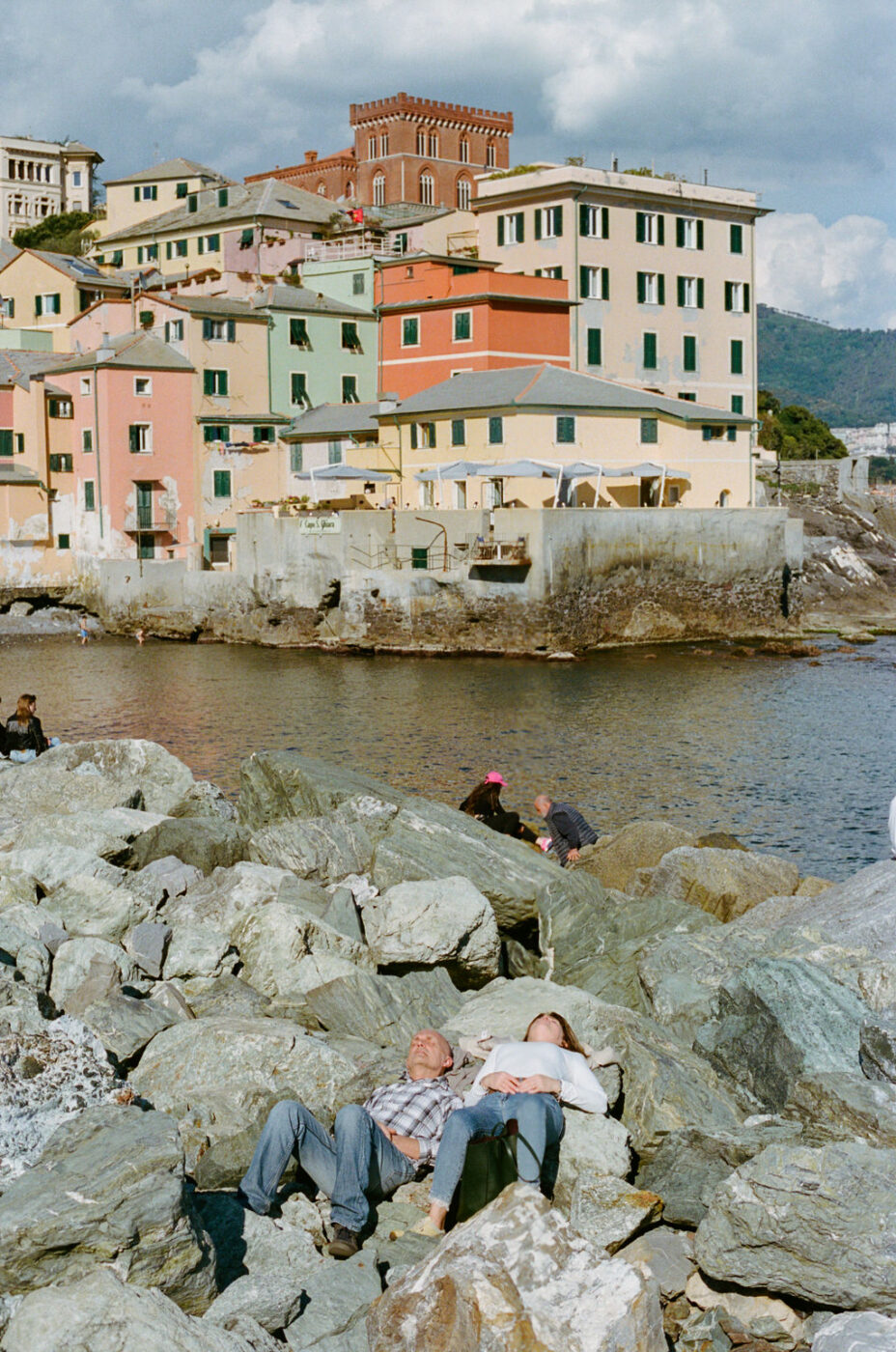Over four million tourists came through the UNESCO heritage site of Cinque Terre in 2023, all crammed into an area no larger than one kilometer. Sure, the collection of towns is an icon for a reason, but they aren’t entirely unique, especially in Liguria. Kaleidoscope-colored houses, windows selling oily focaccia, clear and sparkling sea, and hiking trails exist all along the coast in towns that offer a truer–but still aesthetic–slice of Ligurian life. Here, cinque città to visit that aren’t Cinque Terre, but that well-deserve all the same hype and attention.
Santa Margherita Ligure
Known as the Pearl of Tigullio, after the gulf it overlooks, this town certainly lives up to its moniker. Framed between the sea and the mountains with Liguria’s classic color palette, Santa Margherita Ligure is most often bypassed for its glitzy neighbor Portofino, although it offers more to do, more places to eat, more beachfront, and just as much charm. It wasn’t until after WWII that the town became somewhat a destination for international tourists–mostly those en route to the aforementioned locale–though prior the area was quite popular among pirates, wealthy Genovese looking to escape the city, and the European elite. Vestiges of its storied past exist as popular destinations today: the 17th-century hilltop Villa Durazzo-Centurione with its spectacular Italian garden, originally a summer residence for wealthy silk merchants from Genova; the central Castello di Santa Margherita Ligure, constructed in 1550 to protect the city against pirates; and the nearby Abbey of San Fruttuoso, a Benedictine monastery from the 10th century only reachable by foot or boat. Beaches here are ideal for swimming; thanks to the town’s position in a cove, the waters are calmer, and there’s a large port for fishing, tourism, or any sort of boating. From here, Camogli, Rapallo, and, yes, Portofino are a hop, skip, and a jump away.

Rapallo
Rapallo was made for those who love long walks on the beach, since a sunny promenade runs almost the entire length of coast along the small, C-shaped town. The beach and waterfront is only interrupted by a large stone castle that sticks right out into the water. Cleverly named Castello sul Mare (Castle on the Sea), the building was erected in 1551 to counter frequent pirate attacks. Your introduction to Rapallo might have come from literary and history books, rather than guidebooks: the former due to its popularity among poets and authors, namely Friedrich Nietzsche, Ernest Hemingway, Eugenio Montale, and Ezra Pound; the second because it was the site of both the Treaty of Rapallo (1920), which granted Italy the Julian Alps, as well as the infamous Russian-German Treaty of Rapallo (1922), when both countries renounced war reparations and renewed diplomatic relations. Domingo Ghirardelli, founder of the Ghirardelli Chocolate Company, was born (and died) in Rapallo, and the town has no shortage of quaint little bakeries and trattorias to try the best Ligurian cuisine–focaccia included. The city still remains largely off the main tourist track, except for golfers, who come to putt one of the oldest 18-hole courses in Italy, opened in 1930.

Alassio
Eighty kilometers (50 miles) from the French border, Alassio is one of the most romantic cities in the region. Legend claims that Adelasia, daughter of Otto I, Emperor of the Holy Roman Empire, defied her father’s wishes by marrying Aleramo, a young palace servant. They eloped in this coastal village, later renaming it Alaxia (later Alassio) after Adelasia (Otto eventually approved their union). In reality, the city was established around the year 1000 as a small fishing village and remained that way until a 19th-century railway line brought British snowbirds. An Anglican church, English library, tennis club, villas, hotels, clubs, tearooms, and a casino sprang up in response, and it quickly became one of the most visited centers in Italy with over 5,000 Brits every winter through the 1930s. Traces of the town’s romantic past are in the famed Baci di Alassio, heavenly chocolate cookies sandwiched with chocolate ganache that are only made in this town. The city’s most beloved feature, however, isn’t its expansive 4-km stretch of sandy beach, the lengthy pier protruding into the sea, or even the vibrant, colorful-house-lined pedestrian street known as Budello; instead, it’s the Muretto, the 1953 public art project of Caffè Roma owner Mario Berrino and his top patron Ernest Hemingway. Today, the wall features over 800 ceramic tiles signed by notable visitors. The same year, one of the most famous beauty pageants in Italy was created here: the Miss Muretto, also the name given to the winning girl–a prestigious title competed for by aspiring models or actresses until the pageant’s cancellation in 2014.

Tellaro
a bustling trade hub with the Greeks and Phoenicians. Over time, it became a part of the Roman Empire and later came under the rule of Pisan and Genovese powers, before it inevitably faced Saracen invasion. Pirates make their way into the town’s most famous dish–octopus with potatoes, olive oil, lemon, and a few aromatics–which draws inspiration from an ancient legend that an octopus saved the inhabitants from a late night pirate attack by ringing church bells with its long tentacles. You’ll find this same story depicted on the walls of the bright pink, 16th-century Church of San Giorgio, the town’s most famous historic place of worship. Tellaro juts out into the Gulf of Poets on a rocky tuft, and though it offers only minimal sea access through a tiny harbor, it’s certainly not lacking in views. Climb the stairs of the belltower at the Church of Stella Maris, with a lovely pale yellow interior, or walk the mosaic floor under the vaulted roof of the Portico of Sottoripa, originally part of a stone corridor built to defend against, you guessed it, pirates.

Laigueglia
Closer to the border of France than to Genova, Laigueglia brings all the charm, and none of the pretentiousness, from the Côte d’Azur to Liguria. The smallest town in the municipality of Savona, colorful Laigueglia was once a small fishing village, and today, it still feels like that, characterized by quaint bars on the beach, neon umbrellas, fishing nets, boathouses, and elderly locals seemingly glued to benches on the seafront walk. Spend your days among the salty, sandy seaside, or stroll through the tiny alleys and carruggi of the center to see why it’s considered among the most beautiful in Italy. Lush mountains rise right out of the back of Laigueglia, filled with an array of challenging cycling and hiking trails with one-of-a-kind panoramas (and one third of the crowds of the Cinque Terre paths). In the center, new establishments, namely Hotel Windsor, are opening amidst age-old historic establishments, rejuvenating the spirit of the Dolce Vita Era that once flooded the area with celebrities, glitz, and glamor. But at the heart of it all, Laigueglia has stayed true to its simple maritime origins, and that’s precisely why we love it.

BONUS: Boccadasse
We know we said cinque città, but we just couldn’t leave out Boccadasse, a small neighborhood of Genova that has garnered attention for being the closest place to the capital where you can actually swim. The village deserves more recognition, however, than for its tiny slice of pebble beachfront. A largely residential area–with a fun mixture of Art Déco palaces and Rationalist buildings–fans out from the small and humble center of fishing nets, boats, and pastel houses with green shutters. It’s a hotspot for pranzo al mare, where Genovese can dine al fresco at little trattorias near the sea followed by a gelato or spritz and walk along the 2.5 km promenade–once a staple Sunday afternoon excursion for locals. Explore the 17th-century Chiesa di Sant’Antonio, the 13th century Abbey of San Giuliano, or San Giuliano’s Fort, which, together with the remains of the battery of Vagno, show the town’s historical intent as a defender of the Port of Genova. For a bit of luxury, head to the Nuovo Lido beach resort, once a renowned catwalk for the selection of “Miss Italia”; Sophia Loren was crowned Miss Lido here. Tranquil and relaxed, Boccadasse is the flipside to Genova’s industrial, chaotic persona.

